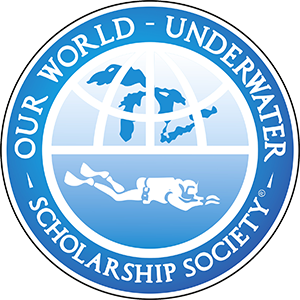Besides lots of sheep, the north east coast of New Zealand has had three Ex-Navy ships prepared and sunk as artificial reefs over the past 10 years! These popular dive sites, have added to the diversity of diving that can be had in this scenic country. The Ex-Greenpeace vessel, The Rainbow Warrier, started the trend going down 22 years ago and is still a popular dive today. However more recently the Ex-New Zealand Navy vessels, the HMNZS Tui and Waikato were prepared and scuttled off the Tukukaka coastline in 1999 and 2000. Then in November 2007 the HMNZS Canterbury joined its counterparts in the Bay of Islands.
The Ex-HMNZS Tui was the first to go down, the preparation and scuttling was predominately the work of Jereon Jongejans, the founder and owner of Dive! Tutukaka. His aim was to make the Tutukaka the premiere diving capital of New Zealand and now his dream has become a reality! However the sinking of the Tui did not go completely to plan and after a severe storm battered the coastline, the ship was broken up into three. Now lying on its port side in 32 m of water and well broken up over reef it makes for a very interesting dive. This dive I did with the Jeroen, approaching the 10 year anniversary of the wreck. I gathered some video footage of the marine life that has colonised its structures and put together a short video you can watch here.
Jeroen’s theory is if it doesn’t go to plan try again – and that’s exactly what he did. After much hard labour stripping and preparing the next ship, he was rewarded in November 2000 when the HMNZS Waikato was scuttled in a record 2 min 40 secs landing upright on sand in 28 m of water. Although the ship did go down bow first and suffered some structural damage, 6 months later a large storm swell broke the ship clean in half just foward of the bridge, leaving an interesting cross section of the wreck! Both of these wrecks had a good diversity of marine life and have provided valuable habitat and structure for fish to aggregate around. Leatherjackets and wrasse would feed off the wreck and large schools of blue maomao and demoiselles clouded the water above both wrecks, with some demoiselles even choosing to spawn on the Tui! But perhaps the best thing was a large school of kingfish circling me while diving the Waikato!
The most recent wreck is that of the Ex- HMNZS Canterbury lying in Deep Water Cove in the Bay of Islands, sitting perfectly upright on a sand patch in 33-37m of water. This location provides protection from the predominate wind and swell, whilst is in prime position to receive the warm clean water that flows southwards along the east coast. After 14 months the wreck had a good covering of algae, anemones and sponges. Leatherjackets were common and good sized snapper were seen around the ship. The wreck is fully open for penetration and after swimming through some main rooms we entered the old helicopter hanger. This large room has become home to a school of baitfish that try to seek protection for kingfish that would frequent the wreck in search of an easy feed.
Island Shuttle and Dive were the operation that kindly offered to host me for a days diving on the Canterbury. It is a family operation with big Cam giving the diving tours after learning from his old man, Dusty, whom served many years on the vessel. Now they both know it inside and out! A very fun day was had on the water with a picnic on the beach followed by a nice reef dive and dinner with the crew.
Artificial reefs have been a particular interest of mine, largely due to the fact that my local area on the Central Coast of NSW, has secured a vessel – the HMAS Adelaide to be sunk off Terrigal some time in 2010. I have already been involved in the baseline monitoring of fish communities around the planned site of this wreck and it is interesting to learn about the process of preparations and support from the local community in different parts of the world. During my scholarship year I have been gathering video footage of these ‘reefs’ all around the world. It is interesting to see the effects of different stages of colonisation and marine communities due to the local water conditions. This insight into artificial reefs has already given me ideas for future research and monitoring and what to expect on newly established reefs.





